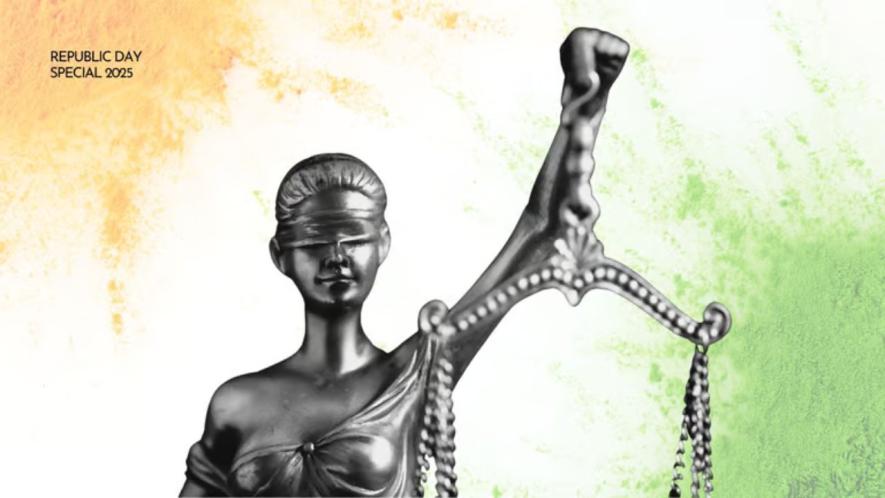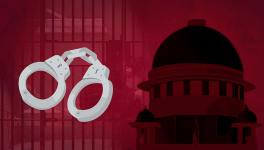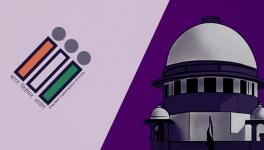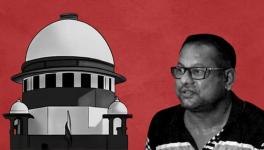R-Day Musings: Can We Finally Remove Blindfold of Justice?

As India celebrates its 76th Republic Day, it is a moment to assess the judiciary— one of the bedrocks of democracy. While progress has been made, systemic inequalities and entrenched biases within the judiciary prevent it from achieving true impartiality. The promise of justice, envisioned as universal and equitable, often fails to reach those on society’s margins.
Dr B.R. Ambedkar, the architect of the Indian Constitution, once declared, “Justice is not a commodity that can be bought or sold. It is a fundamental right guaranteed to every citizen.”
However, this ideal is frequently undermined by structural inequalities, leaving women, Dalits, LGBTQ+ individuals, and other marginalised communities struggling to access their constitutional rights. The judiciary, entrusted with safeguarding these rights, often mirrors the very prejudices it seeks to dismantle.
Dr B.R. Ambedkar, the architect of the Indian Constitution, once declared, “Justice is not a commodity that can be bought or sold. It is a fundamental right guaranteed to every citizen.”
Gender bias in the judiciary
Gender inequality within the judiciary is both glaring and persistent. Women, despite forming nearly half of India’s law graduates, make up just 15.31 percent of practising lawyers and less than 14 percent of high court judges. Of the 719 sitting high court judges, only 99 are women. The situation is equally dismal in the Supreme Court, where female representation has always been negligible.
Beyond the statistics, the treatment of women within courtrooms reflects the entrenched sexism in the legal system. In 2024, Justice Vedavyasachar Srishananda of the Karnataka High Court made a crude remark to a female lawyer, reducing her professional credibility by saying she might “reveal the color of his [a person involved in the case] undergarment”.
Such incidents underscore the hostile environment women face in the legal profession, where they are routinely undermined and belittled. Court rulings have also perpetuated patriarchal stereotypes.
In multiple divorce cases, judges have invoked regressive notions, describing the ideal wife as “a minister in purpose, a slave in duty, Lakshmi in appearance, and a prostitute in bed”. These remarks not only reflect societal biases but also perpetuate harmful norms that alienate women seeking justice.
Bias against LGBTQ+ communities
For the LGBTQ+ community, the judiciary has been both a source of hope and disappointment. While the landmark Navtej Singh Johar versus Union of India judgment decriminalised homosexuality, systemic bias against queer individuals persists.
In 2024, a high court judge dismissed a same-sex couple’s plea with disdain, labelling their relationship “immoral”. Such incidents highlight the judiciary's reluctance to embrace inclusivity and challenge societal prejudices.
The case of Saurabh Kirpal, a senior advocate whose elevation to the Delhi High Court has been stalled, further illustrates this bias. The objections to Kirpal’s appointment— based on his sexual orientation and his partner’s foreign nationality— expose the judiciary's failure to rise above narrow societal norms.
Moreover, the absence of official data on LGBTQ+ representation in the judiciary underscores the systemic exclusion faced by the community. This lack of representation not only limits diversity but also impairs the judiciary's ability to understand and address the unique challenges faced by sexual minorities.
Caste and class inequities
Caste-based discrimination remains a deeply ingrained problem in India, and the judiciary is no exception. Despite Scheduled Castes (SCs) and Scheduled Tribes (STs) comprising nearly 30 percent of India’s population, their representation in the judiciary remains disproportionately low. From 2018 to 2023, only 23 SC and 10 ST judges were appointed across high courts, highlighting the persistent exclusion of marginalised communities.
Although milestones such as the appointment of Justice Prasanna B. Varale to the Supreme Court in 2024 are commendable, they are exceptions rather than the norm. The judiciary's failure to address the intersectionality of caste, class, and gender perpetuates systemic inequities, leaving marginalised communities underserved and disempowered.
Combating judicial stereotypes
Stereotypes, rooted in societal norms, continue to influence judicial reasoning. Recognising this, the Supreme Court of India released a Handbook on Combating Gender Stereotypes in 2023.
The guide identifies and discourages the use of terms such as “fallen woman” or “effeminate”, urging judges to challenge biases rather than reinforce them.
However, handbooks and guidelines alone cannot address deeply entrenched prejudices. Judicial officers need comprehensive training in caste, gender and class sensitivity to ensure fair treatment for all litigants. Judges must also be held accountable for behaviour that undermines the judiciary's credibility and commitment to justice.
The evolving symbolism of Lady Justice
Traditionally depicted with a blindfold to symbolise impartiality, Lady Justice has been reimagined in India. A new statue unveiled in 2024 portrays her without a blindfold, reflecting the need to confront social realities rather than ignore them. This shift aligns with the principle of ‘legal realism’, which calls for laws to be applied with a nuanced understanding of societal contexts.
Justice must be both impartial and empathetic, balancing fairness with awareness of the socio-economic factors that shape the experiences of individuals. This evolution in the symbolism of Lady Justice represents a call to move beyond abstract ideals and engage with the lived realities of the people the judiciary serves.
In multiple divorce cases, judges have invoked regressive notions, describing the ideal wife as “a minister in purpose, a slave in duty, Lakshmi in appearance, and a prostitute in bed”.
Toward an inclusive judiciary
Creating a truly inclusive judiciary requires systemic reforms. Increasing representation from marginalised communities is a critical first step. Transparent selection processes, affirmative action and mentorship programmes can help bridge the representation gap and ensure a judiciary that reflects India's diversity.
Judicial education must also evolve to include training on diversity and inclusion. Tools like the Handbook on Combating Gender Stereotypes should be implemented rigorously, and judges must be sensitised to the realities of caste, gender and class inequalities.
As Dr Derrick Bell aptly noted, “The law is a powerful tool for social change, but it must be used in a way that is sensitive to the needs and experiences of marginalised communities.” The judiciary must embrace this ethos to fulfill its transformative potential.
A call to action
On this Republic Day, as we reflect on the progress and challenges of our democracy, the judiciary must confront its shortcomings and recommit to its foundational principles of justice and equality. Dr. B.R. Ambedkar’s words remind us that justice is not a privilege but a right guaranteed to every citizen. Achieving this vision requires bold steps, critical thinking, and an unwavering commitment to dismantling the systemic barriers that impede true equality.
Only by embracing inclusivity and challenging entrenched biases can the judiciary uphold the Constitution's promise of justice for all. It is time to remove the blindfold of justice— not to compromise fairness, but to confront and address the realities that shape the lives of those it serves.
Naina Bhargava is a lawyer and the founder and editor of The Philosophy Project. She actively writes on gender, the Constitution, history and philosophy.
Get the latest reports & analysis with people's perspective on Protests, movements & deep analytical videos, discussions of the current affairs in your Telegram app. Subscribe to NewsClick's Telegram channel & get Real-Time updates on stories, as they get published on our website.
























